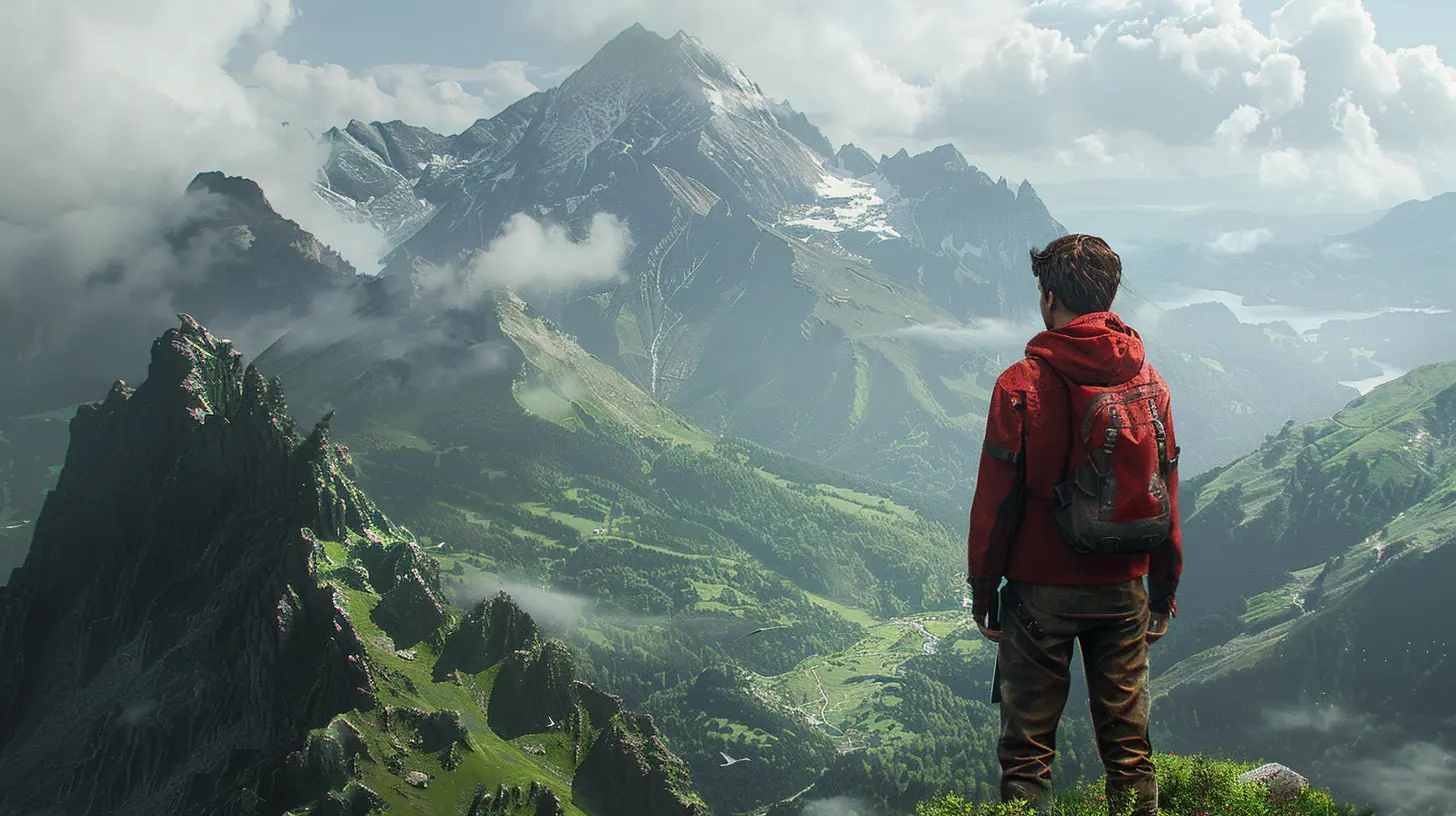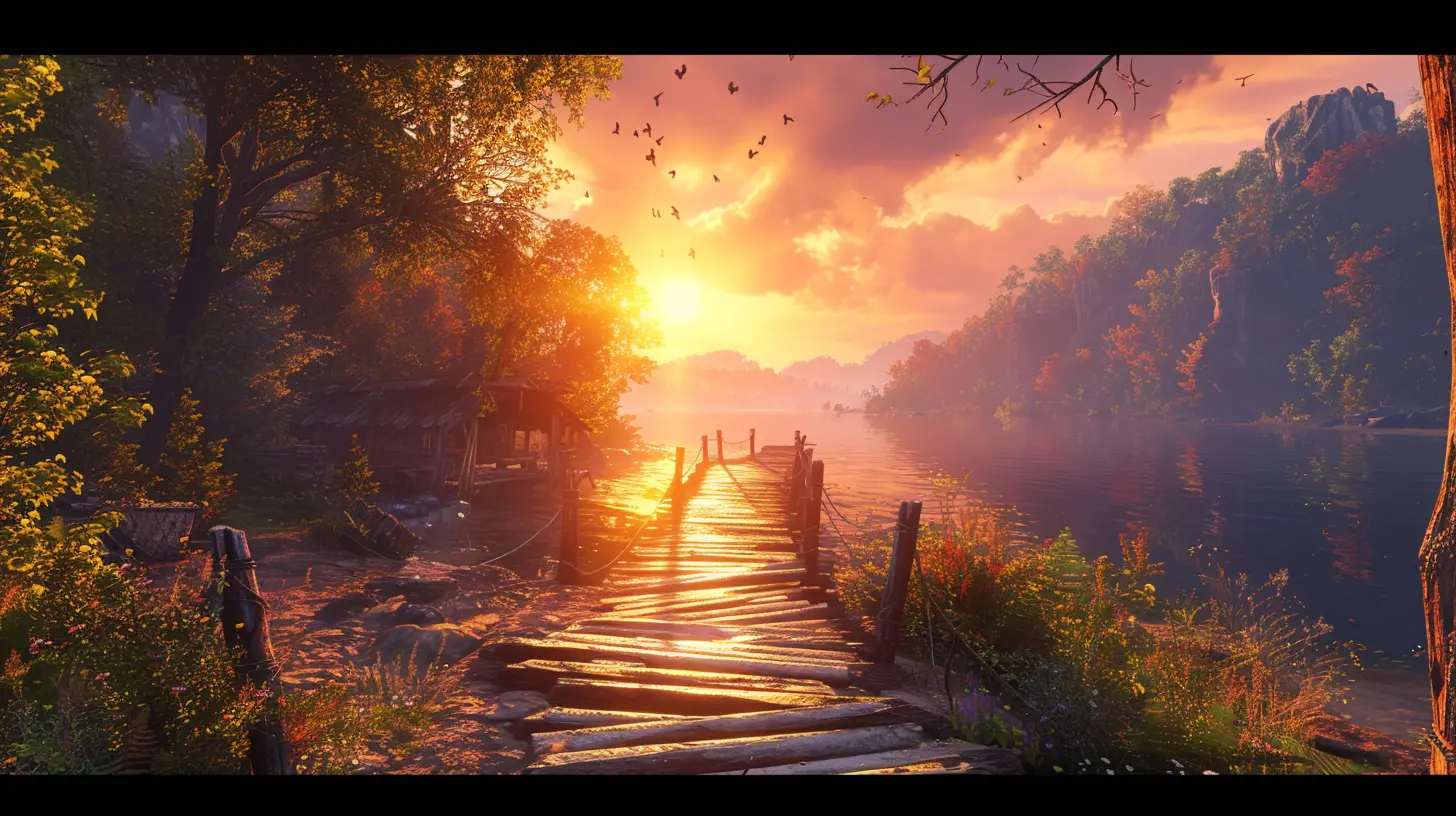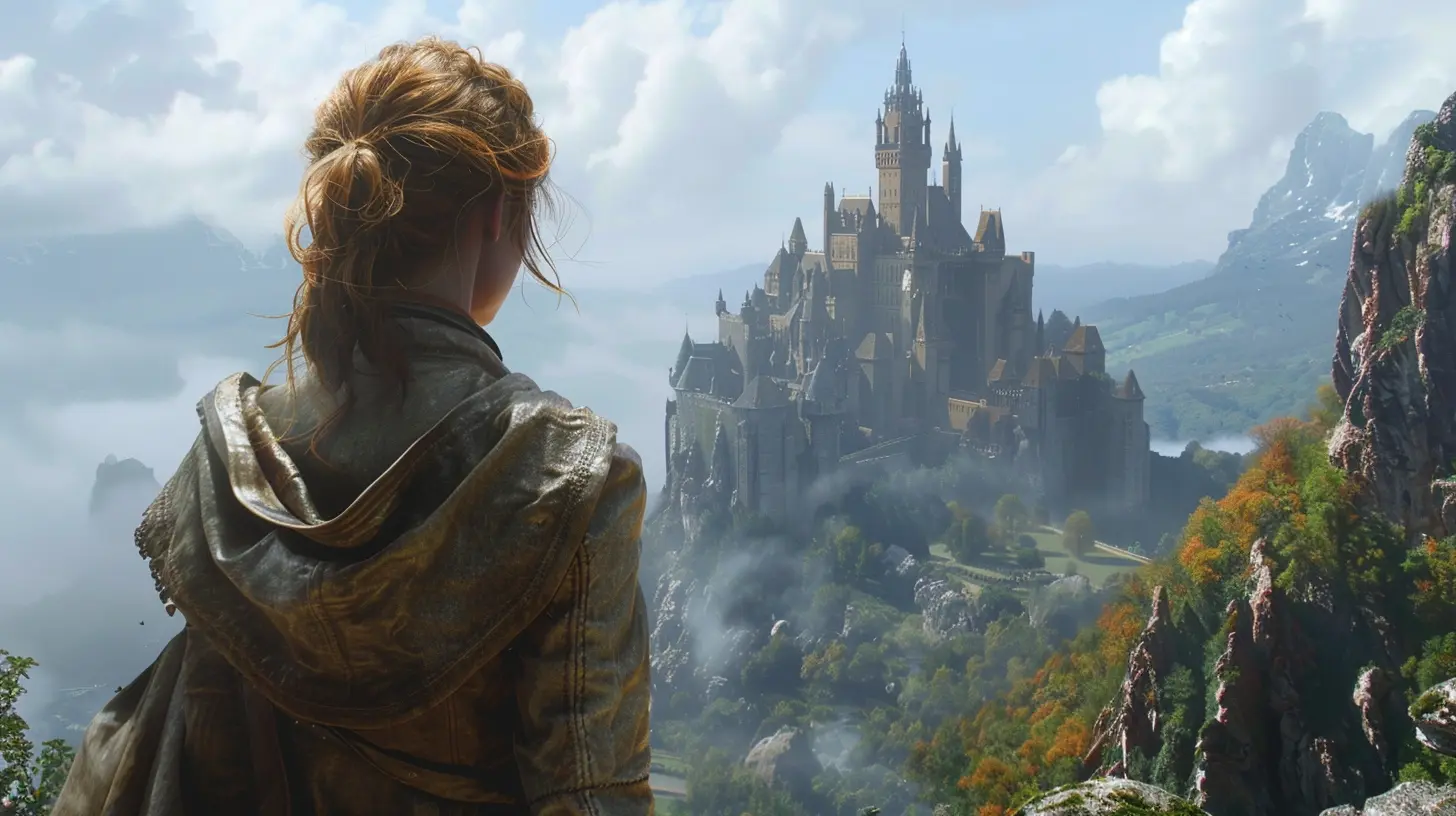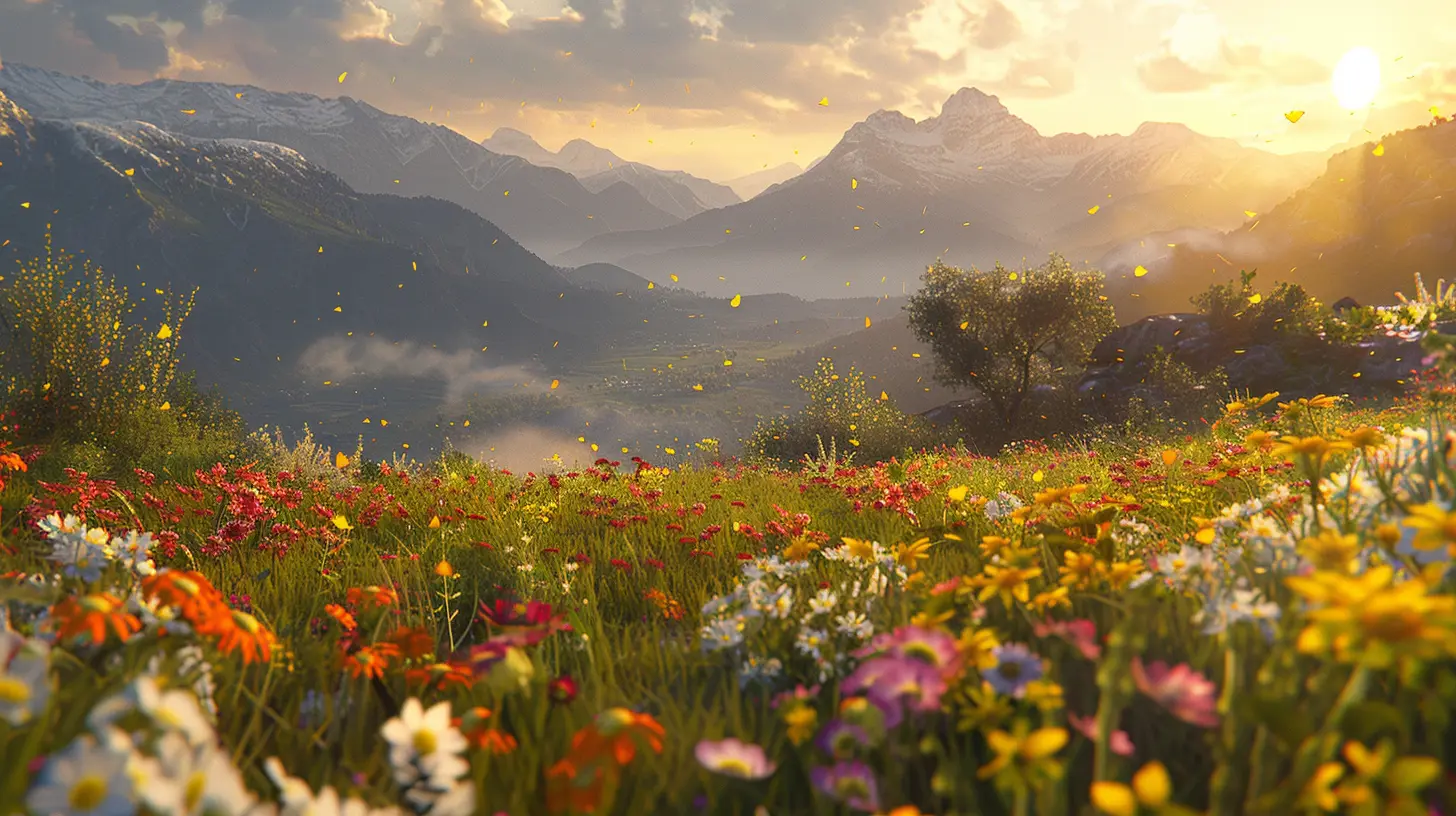Does Open-World Design Make Adventure Games Better?
20 August 2025
If you're anything like me, the thrill of booting up a new adventure game is unmatched—stepping into a rich, mysterious world, meeting quirky characters, and solving puzzles as you uncover a gripping story. But here’s a thought: what if that adventure unfolds in a massive, open-ended environment where you're free to roam, ignore the main quest for hours, or stumble upon stories that weren’t even part of the main game? Welcome to the world of open-world design.
But here's the million-dollar question: Does open-world design actually make adventure games better? Or is bigger not always better?
Let’s dive in and talk about it—not from a theoretical game design lecture standpoint, but as gamers who love to explore, discover, and get lost in digital worlds.
What Is Open-World Design, Anyway?
Alright, before we go any deeper, let's make sure we're all on the same pixelated page.Open-world design refers to a game world that players can explore freely. Instead of being funneled down a set path (like in many traditional adventure games), players are given a large, often seamless environment to explore at their own pace. Think Skyrim, The Legend of Zelda: Breath of the Wild, or Red Dead Redemption 2.
You don’t have to follow a straight line. Side quests, hidden collectibles, random encounters—they're all part of the chaos and charm.
So how does this apply to adventure games?
The Core of Adventure Games: Story, Puzzle, and Discovery
Adventure games have always been about three pillars: the story, the puzzles, and the sense of discovery.Classics like Monkey Island or Grim Fandango were all about narrative. You weren’t running around a sandbox world—you were immersed in a story-rich, tightly-designed experience where every scene was crafted with purpose. Add a sprinkle of puzzles, some clever dialogue, and boom—you’ve got a classic.
Now, throw open-world into the mix, and things change. A lot.
Open Worlds Bring Depth... But At What Cost?
🌍 Pro: Freedom to Explore
One of the biggest strengths open-world games bring to the table is freedom.You can climb that mountain because it’s there. You can ignore the main quest for 15 hours and chase after a side character’s tragic backstory or just fish by a river. You’re not just playing a story—you’re living in the world.
That freedom can make adventure games feel more immersive. Instead of being told what to do next, you're gently nudged and left to your own curiosity.
❌ Con: Weak Narrative Focus
Here’s the catch. When your world is massive and open-ended, it’s hard to create a focused, compelling narrative.Ever played an open-world game where the main character’s family is in danger, yet you're off collecting mushrooms for a random hermit? Yeah, that emotional impact gets lost when you’re constantly distracted.
Adventure games thrive on well-paced storytelling. Open-world design can dilute that if not handled with care.
Player Agency: Your Story, Your Choice
Adventure games have evolved. These days, we want choices—both big and small. Should you help the mysterious stranger or walk away? Should you unlock that cryptic door or leave it alone?Open-world environments are fantastic at supporting this kind of player agency. They let players write their own stories within the game’s world.
Games like The Witcher 3 or Horizon Zero Dawn strike a perfect balance—offering both a rich open world and a compelling main narrative. Their success shows that when done right, open-world elements can elevate adventure games to new heights.
But it's not just about walking wherever you want. It’s about meaningful exploration.
The Joy of Getting Lost (On Purpose)
Let’s be honest—sometimes the best parts of an adventure game aren’t part of the main questline at all.That hidden cave with a long-forgotten journal. The abandoned village with environmental storytelling that makes you go, “Whoa, what happened here?” These moments of organic discovery are gold and are much more likely to happen in open-world setups.
In linear games, moments are carefully placed like dominoes. In open-world adventures, they’re scattered like seashells on a beach—you find some by chance, and they stick with you because you weren’t told to find them. You just did.
Pacing: The Double-Edged Sword
Pacing is everything in storytelling. It’s the rhythm that keeps you engaged.🎯 Linear Adventure Games: Tight, Focused Pacing
Games like Life is Strange or Firewatch don’t have massive worlds. Instead, they keep the player on a carefully guided path, ensuring the emotional beats land at just the right time. You can’t “miss” the rising tension or wander too far from the plot.🧭 Open-World Games: Pacing in Player's Hands
In open-world adventure games, pacing is in your hands. That’s empowering—but also risky.Players may get distracted, lose momentum, or completely forget what they were doing. The narrative can feel disjointed if not anchored by strong design cues that guide but don’t force.
It’s like giving someone a box of Legos without instructions. Some will build magic. Others will just stare, unsure where to begin.
Puzzle Design in an Open World
Ah, puzzles—the backbone of many adventure games.In traditional setups, puzzles are designed within a controlled environment. You know you need to find a key to unlock a door, and every clue is nearby.
In open-world design? All bets are off.
It’s harder to create puzzles that players won’t stumble upon before they have the tools to solve them. Devs have to design smarter—make multiple solution paths, put clues across the map, or embed learning naturally through the environment.
Not easy. But when done right, it’s magical.
Just think of how Breath of the Wild scattered its physics-based puzzles across the world. Each shrine was a mini-adventure, and solving one felt like a reward worth the detour.
Technical Challenges & World Building
Creating a sprawling open world isn’t just about slapping trees and cliffs everywhere. It requires insane levels of detail, smart layout, and performance optimization.🏗️ Immersive Worlds Require Investment
To make an open-world adventure really shine, developers need to fill the world with life—dynamic NPCs, lore-rich environments, weather systems, and more. That’s a heavy lift.The payoff? If done well, players feel like the world exists with or without them. It's living, breathing, reacting.
But if corners are cut? You get lifeless, repetitive landscapes that feel more like a chore to navigate than an exciting adventure.
Do Players Actually Want Open-World Adventure Games?
Here’s the thing—players are split.Some love the freedom, the exploration, the ability to ignore the main story entirely.
Others miss the old-school charm of point-and-click tales, where every detail mattered and the story was laser-focused.
That’s why we’re starting to see hybrid approaches. Semi-open worlds. Hub-based designs. Games that offer exploration without overwhelming the player.
You get the best of both worlds—a sense of freedom with narrative focus.
Striking the Balance: Examples That Got It Right
Let’s give shoutouts to a few games that nailed the open-world adventure formula:🛡️ The Legend of Zelda: Breath of the Wild
This is the poster child for how open-world design can enhance adventure. It doesn’t hold your hand. You wake up, walk outside, and the world’s yours. Climb mountains, solve shrines, ride wild horses.Every direction leads to something interesting.
And somehow, despite its size, the game tells a compelling story through environmental design and subtle NPC interactions.
⚔️ The Witcher 3: Wild Hunt
Sure, it’s technically a role-playing game, but the adventure elements are strong. The side quests often have better storytelling than most games' main campaigns.You explore, you make choices, and every inch of that world feels deliberate.
🛸 Subnautica
An underwater open-world survival game with a heavy dose of mystery and storytelling. It masterfully mixes freedom with narrative. You’re not told everything—you uncover the story through exploration and scanning ancient alien tech.So… Does Open-World Design Make Adventure Games Better?
Here’s the honest answer: it depends.Open-world design can absolutely enhance adventure games—if it’s done with care, purpose, and smart pacing. It gives players agency, builds immersion, and allows for unforgettable moments of discovery.
But it can also water things down. Without a strong narrative anchor, players can feel lost or unmotivated. Adventure games need direction, emotion, and pacing—things that open-world design can sometimes undermine.
Ultimately, it's a balancing act. Just like in real adventure stories, sometimes the map helps. Other times, it’s better to follow the stars.
Final Thoughts
If you're a developer: don’t add open-world just because it's trendy. Use it if it complements your story and gameplay.If you're a player: embrace both worlds. There’s magic in bold exploration, and there’s magic in tight storytelling. The best games find the middle ground.
Is open-world the future of adventure games? Maybe. But only when the design choices serve the adventure—not distract from it.
all images in this post were generated using AI tools
Category:
Adventure GamesAuthor:

Lana Johnson
Discussion
rate this article
1 comments
Kinsley Huffman
Open-world design enhances exploration and immersion, but it often sacrifices narrative depth. Balancing freedom with meaningful storytelling is key to elevating adventure games effectively.
September 5, 2025 at 3:58 PM

Lana Johnson
I appreciate your insight! Striking the right balance between exploration and narrative depth is indeed crucial for creating a truly engaging open-world adventure.


